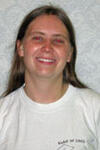Katrina Sliwa
The quantum back-action of the measurement apparatus arising from the Heisenberg uncertainty principle is both a fascinating phenomenon and a powerful manipulation tool. Unfortunately, there are other effects which may overwhelm the Heisenberg back-action. This thesis focuses on two effects arising in the dispersive measurement of superconducting qubits made with two commonly used ultra-low-noise parametric amplifiers, the Josephson bifurcation amplifier (JBA) and the Josephson parametric converter (JPC). The first effect is qubit dephasing due to excess photons in the cavity coming from rogue radiation retro-emitted by the first amplifier stage toward the system under study. This problem arises primarily in measurements made with the JBA, where a strong resonant pump tone is traditionally used to provide the energy for amplification. Replacing the single strong pump tone with two detuned pump tones minimized this dephasing to the point where the Heisenberg back-action of measurements made with the JBA could be observed.
The second effect is reduced measurement efficiency arising from losses between the qubit and the parametric amplifier. Most commonly used parametric amplifiers operate in reflection, requiring additional lossy, magnetic elements known and circulators both to separate input from output, and to protect the qubits from dephasing due to the amplified reflected signal. This work presents two alternative directional elements, the Josephson circulator, which is both theoretically loss-less and does not rely upon the strong magnetic fields needed for traditional circulators, and the Josephson directional amplifier which does not send any amplified signal back toward the qubit. Both of these elements achieve directionality by interfering multiple parametric processes inside a single JPC, allowing for in-situ switching between the two. This brings incredible experimental flexibility, and also makes these devices strong candidates for `on-chip’ integration, which would in turn eliminate loss between the qubit and parametric amplifier as a dominant source of reduced measurement efficiency.
